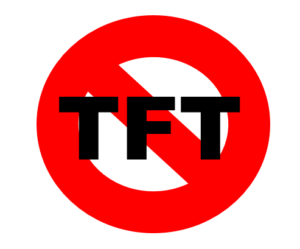To this point, I have attempted to lay some groundwork that justifies Teaching for Transfer (TFT) as a subdiscipline of English, as it is an emerging disciplinary question in the field. It is possible, however, that I have been thinking too narrowly and need to reflect first on the greater ongoing discussion in an already established subdiscipline in order more fully shape a discussion and justification for TFT as its own subdiscipline.
Because the discussion of transfer is supported by the field’s desire to encourage students to utilize learned writing skills across disciplinary contexts, a more appropriate scope of research in ENGL 810 would be Writing Across the Curriculum (WAC). According to Gallegos (2013), “[WAC] recognizes that writing is an integral part of knowledge production within every discipline or because it involves instructors in other disciplines in the teaching of writing, but also because it is a model in which students’ use of writing to learn, as well as to demonstrate learning in courses across the disciplines, helps them to realize the necessity of writing throughout their academic careers.” Transfer and WAC are related in that both privilege contextualized writing, yet WAC is an established movement that transcends disciplinarity while still being quarterbacked by the English department.

David Russell dealt with the history of WAC in his work “American Origins of the Writing-across-the-Curriculum Movement.” In this article, Russell indicated that the origins of WAC date back to the late nineteenth century and are a response to “the American tradition of progressive education” (1992, p. 3). Progressive education is the result of conflict that emerged from an industrial society—a building pressure between increased specialization of knowledge, professional work, and the need “to integrate more fully an ever-widening number of citizens into intellectually meaningful activity” (p. 3). Guerra noted that visions of WAC solidified as a movement in the late 1970s when WAC became “institutionally acceptable” (p. 297). But in spite of disciplinary support, according to Condon and Rutz (2013), WAC lacked consistency: “[WAC] pedagogy and associated philosophy have become widespread, yet WAC as a phenomenon does not possess a single, identifiable structure; instead, it varies in its development and its manifestation from campus to campus” (p. 358). Institutions who utilize a WAC model each designate their own outcomes to work toward, but for Condon and Rutz, successful WAC programs are supported by a complex infrastructure that supports general education and first-year seminar goals (p. 359). First-year programs across institutions, therefore, need to be in conversation with each other. This is unrealistic, of course, due to local affordances and constraints, so Condon and Rutz challenge outcomes as a structure.
 Condon’s and Rutz’s assertion begs a major question in the field: Does goal-oriented progress, or the use of outcomes, increase the tension that exists between the disciplines? Gallagher’s work (2012) is critical of outcome assessment (OA), positing that though OA is “common sense” because of the goals they provide for student learning and the results that can be measured for curricular improvement (p. 42), “[f]ocusing on outcomes tends to limit and compromise the educational experiences of teachers and students” (p. 43). In an effort to resolve, or provide a structure for, the inconsistencies in WAC programs, Condon and Rutz propose their own structure, noting, “To honor the resilience and variety of WAC programs, we offer a taxonomy, an organized classification system based on key characteristics” (2013, p. 358). Interestingly, Yancey (2005) supports the WPA Outcomes Statement in her work “Standards, Outcomes and All that Jazz,” citing specific reasons as to how and why outcomes are useful tools.
Condon’s and Rutz’s assertion begs a major question in the field: Does goal-oriented progress, or the use of outcomes, increase the tension that exists between the disciplines? Gallagher’s work (2012) is critical of outcome assessment (OA), positing that though OA is “common sense” because of the goals they provide for student learning and the results that can be measured for curricular improvement (p. 42), “[f]ocusing on outcomes tends to limit and compromise the educational experiences of teachers and students” (p. 43). In an effort to resolve, or provide a structure for, the inconsistencies in WAC programs, Condon and Rutz propose their own structure, noting, “To honor the resilience and variety of WAC programs, we offer a taxonomy, an organized classification system based on key characteristics” (2013, p. 358). Interestingly, Yancey (2005) supports the WPA Outcomes Statement in her work “Standards, Outcomes and All that Jazz,” citing specific reasons as to how and why outcomes are useful tools.
Much research within the discussion of WAC has been produced over the last several decades, including work on genre, literacy, and transfer (Bawarshi, 2010; Devitt, 2009; Goldblatt, 2007). But perhaps the most interesting research has been on WAC in practice, thus responding to the question of goal-oriented instruction. Kinney and Murray Costello (2015), for example, note that one of WAC’s greatest strengths is also one of its greatest weaknesses: while it does not compel students to enroll in a required sequence of courses, students are enabled to delay enrollment indefinitely. WAC has been a useful pedagogical model at Binghamton University, but students were not required to take a first-year writing course early in their curriculum, “leaving them ill-equipped to take on higher-order literacy tasks” (p.143). Here, it seems that outcomes within a WAC course do little to help students apply writing skills across the curriculum when the most basic outcomes are left unmet. This causes us to question Yancey’s point that outcomes are useful tools—the adjective “useful” does not describe the extent to which outcomes support successful vertical progression through a curriculum. More research and discussion is needed in this question, however, as we cannot limit ourselves or our students to a standard measure of usefulness in determining their success or our own.
References
Condon, W. & Rutz, C. (2013). A taxonomy of writing across the curriculum programs: Evolving to serve broader agendas. Conference on College Composition 64(2), 357-382.
Gallagher, C.W. (2012). The trouble with outcomes: Pragmatic inquiry and educational aims. College English 75(1), 42-60.
Gallegos, E.P. (2013). Mapping student literacies: Reimagining college writing instruction within the literacy landscape. Composition Forum 27. http://compositionforum.com/issue/27/literacies.php.
Guerra, J. (2008). Cultivating transcultural citizenship: A writing across communities model. Language Arts 85(4), 296-304.
Kinney, K. & Murray Costello, K. (2015). Back to the future: First-year writing in the Binghamton University writing initiative, State University of New York. In M.J. Reiff, et al. (Eds.), Ecologies of writing programs: Program profiles in context, Anderson, SC: Parlor Press, 142-162.
Russell, D. R. (1992). American origins of the writing across the curriculum movement. In C. Bazerman and D. Russell (Eds.), Landmark essays on writing across the curriculum, Hermagoras Press.
Yancey, K. B. (2005). Standards, outcomes, and all that jazz. In S. Harrington, et al. (Eds.), The Outcomes Book. Logan, UT: Utah State UP.
